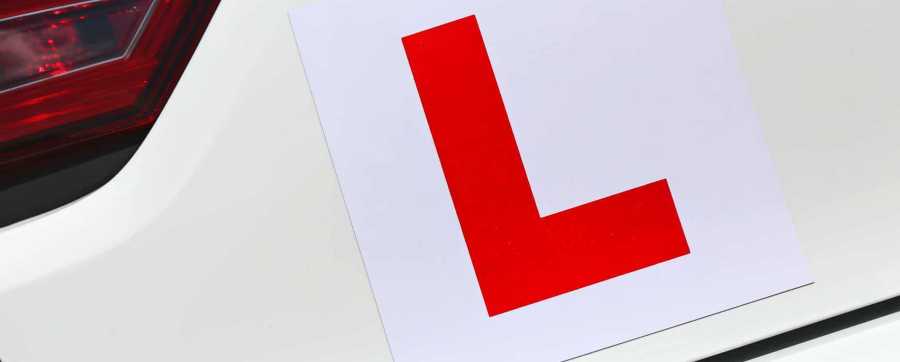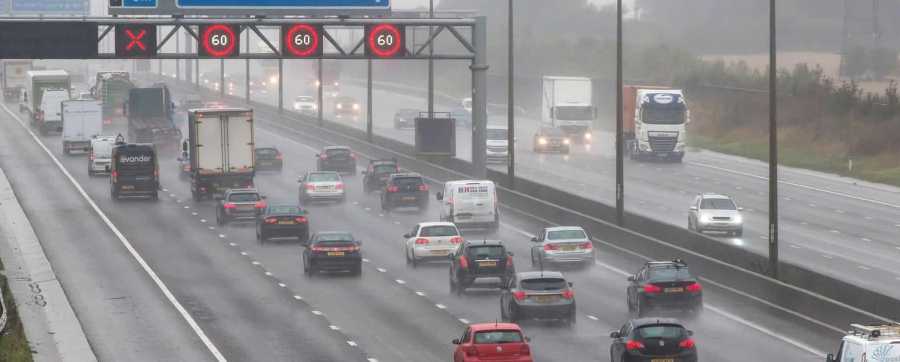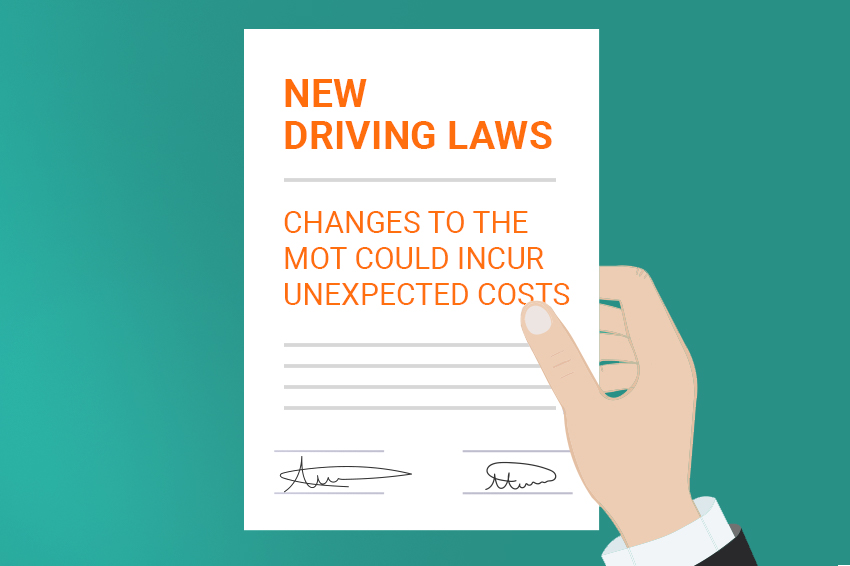- New MOT categories
- Learner drivers on the motorway
- New overtaking advice for cyclists and motorists
- Smart motorway rules could incur fines
If you are a motorist on the road then chances are you’ve read something about changes that are happening or have happened when it comes to motoring. Rules are changing all the time and in this article, we are going to look at the changes that have happened as well as those that have been proposed and the things you might need to keep an eye out for in the near future.
Are there any new MOT rules in 2019?
In May 2018 changes to the MOT test were introduced in England, Scotland and Wales. These changes included the introduction of new categories, emission rules for diesel cars and car faults that are now looked at.
If you are about to put your car through its first MOT, or the first MOT in 12 months, then chances are, you won’t have encountered the new categories or checks that have been put in place.
When your car is put through the various tests for an MOT the new results are listed as:
- Dangerous
- Major
- Minor
- Advisory
- Pass
The category that each fault found during the MOT will be given by the tester depends greatly on what type of problem has been found and how serious it is.
Searching for a new car and not sure what sort of offers are available right now? Sign up for our weekly newsletter and we’ll send the special offers straight to your inbox.
Newsletter Signup
What do the new MOT categories mean?
According to the Department for Transport (DfT), each of these categories has a specific repair requirement and will affect the overall result of your MOT accordingly.
| Result | What it means | Overall MOT result |
| Dangerous | A direct and immediate risk to road safety or has a serious impact on the environment. Do not drive the vehicle until it’s been repaired. | FAIL |
| Major | It may affect the vehicle’s safety, put other road users at risk or have an impact on the environment. Repair it immediately. | FAIL |
| Minor | No significant effect on the safety of the vehicle or impact on the environment. Repair as soon as possible. | PASS |
| Advisory | It could become more serious in the future. Monitor and repair it if necessary. | PASS |
| Pass | It meets the minimum legal standard. Make sure it continues to meet the standard. | PASS |
Source: https://www.gov.uk/government/news/mot-changes-20-may-2018
Any items that are listed as ‘Advisory’ are the ones that your MOT testers think you need to monitor.
What else is going to be looked at during the MOT?
The next time you get your car checked as part of the MOT the test centre will be looking at some new items:
- Any tyres that are obviously underinflated
- If the brake fluid has been contaminated
- Any fluid leaks that pose an environmental risk
- Brake pad warning lights and any missing brake pads or discs
- Reversing lights on vehicles first used from 1 September 2009
- Headlight washers on vehicles first used from 1 September 2009 (if they have them)
If your car has daytime running lights (first used from 1 March 2018) these will also be tested. However, most vehicles that have these will not be due for their first MOT until 2021 when they are 3-years-old.
I drive a diesel, does this make a difference?
If you drive a diesel car you likely have a diesel particulate filter (DPF). These filters have been fitted in cars for almost 20-years and they capture and store exhaust soot – hence also being referred to as ‘soot traps’. In 2009 they were made mandatory in diesel cars as part of legislation that was introduced to reduce car CO2 emissions.
As part of the newer MOT checks, from May 2018, the MOT tester will also be looking at your DPF due to stricter emission limits.
If, when checked, the MOT tester is able to see any of the following, you will get a ‘major fault’:
- Smoke of any colour coming from the exhaust
- Evidence that the DPF has been tampered with
My car was registered in 1970; do I still need to get an MOT?
[vc_column width=”1/4″][vc_single_image image=”84695″ img_size=”article-image”][vc_column width=”3/4″]Until the beginning of May 2018, only cars that were built before 1960 were exempt from having an MOT. This is no longer the case.
If your vehicle was originally registered 40 years ago, then it no longer needs an MOT. However, this is only if the vehicle hasn’t been substantially changed. If you are unsure of the date that your car was first registered then you can use the government’s MOT history checker to find out. (https://www.gov.uk/check-mot-history).According to the DfT website, substantial changes include (but are not limited to):
- A car that has been given a ‘Q’ registration number (this is given to cars where the age or identity is in doubt)
- The car is a kit car made up of components from different makes and models of vehicle
- The car is a reconstructed classic vehicle
If you want to find out more about substantial changes or want to make sure your car is eligible for exemption, check the government website.MOTs are not the only area where motorists are going to be experiencing changes over the next few months. Rules and regulations are tightening up in several areas; including what you need to look out for on the motorway.
Am I allowed to drive in a lane marked with a red ‘X’ on the motorway?
If you see a red ‘X’ above a lane on the motorway it signifies that the lane is closed and must not be used. It could be that the lane has been closed due to an accident or because there is debris in the road. The red ‘X’ is used to indicate that the road must be kept clear for emergency services or workers and ensures that everyone using the road is safe and to prevent further incidents.If you are caught using a lane marked with a red ‘X’ then you could be fined. A proposal has been put forward that would introduce a set fine of up to £100 for motorists who are found to be using a closed lane.
Smart motorways are just like any other road, if you ignore the rules then you risk penalty points on your licence and a fine. All smart motorways are monitored by cameras, and though fines are currently issued manually by the police, in the future this could be an automated system.
Looking for a new car? Call our team and let them help you to find it.
I’m a learner driver; can I go on the motorway?
Time was that your first experience of driving on the motorway didn’t happen until after you’d passed your test and it could be quite a nerve-wracking thing.
If you’re learning to drive and would like experience on the motorway then you now can.
From 4th June 2018, any learner driver can drive on the motorway during lessons as long as they are:
- Accompanied by an approved driving instructor – trainee driving instructors cannot take learner drivers on the motorway
- Driving a car that has been fitted with dual controls
- Clearly displaying an L plate (or D plate in Wales)
Though these changes have been introduced, motorway driving is not going to be included in the driving test.
Why is this change being introduced for learner drivers?
This new change has been introduced in order to give learner drivers a better feel for driving on busier roads, but they’re not a compulsory part of driving lessons.
Giving learners experience on the motorway will also give them the opportunity to have broader experience on the roads, including how to join and leave the motorway correctly, driving at higher speeds, learn what to do if they break down on the motorway and improve their confidence. All of these things will contribute to making them better drivers when they pass their test.
Learner drivers on the motorway? What do I need to know if I see one?
If you spot a learner driver on the motorway use common sense. As you would with any other vehicle driving on the motorway, keep a safe distance from the car in front and when the road conditions are wet, icy or it’s foggy, just increase the gap a little to give you more room to stop if there’s an issue.
Be patient. A learner driver isn’t going to be as experienced when it comes to anticipating events on the road or responding to them.
The Highway Code rules on driving on the motorway have been updated to reflect the changes when it comes to learner drivers.
I’ve recently passed my driving test, are there different rules for me?
The simple answer to this question is yes. If you have had your driving licence for two years or less then you can only get up to a maximum of 6 penalty points before your licence is revoked and retake your theory and practical tests.
To put this in perspective:
- A single speeding penalty could garner you a minimum 3 points on your licence and a fine of £100
- Being caught using your mobile while driving will earn you 6 points and an immediate ban
What’s a Graduated Driving Licence?
In February 2018, Theresa May asked the DfT to investigate the possibility of graduated driving licences for new drivers. The hope is that this new scheme could reduce the number of accidents on the road that involve newly qualified motorists.

Similar schemes are already in place in countries like Australia, New Zealand and America where drivers under the age of 25 have the following restrictions:
- Lower top speed
- Limited to the number of passengers they are allowed in their car
- Banned from driving at night
New drivers who have been driving for less than two years face stronger penalties for some offences. The introduction of a graduated driving licence would bring about a stronger set of rules and regulations for new drivers to follow.
The graduated driving licence scheme is something that has not been finalised, though in April 2018 it was announced that a pilot scheme is going to be carried out in Northern Ireland at some point in 2019.
It is believed that the graduated licence would introduce restrictions for new drivers such as:
- A curfew – stating times when newer drivers are allowed on the roads
- A passenger limit
- A separate and lower maximum speed limit
- Lower alcohol limit than drivers who have been on the road longer
- Smaller engine sizes – a limit to how powerful their car can be
- P Plates could become mandatory for up to two years
The graduated driving licence has not been approved for use in the UK and the trial has yet to take place.
With the announcement of a new action plan that is being written to protect all road users, motorists new and old are being asked to pay attention to other people on the roads. Rules regarding the amount of room a cyclist needs when being overtaken on the road and other methods of ensuring better safety on the road are being proposed as part of the plan.
What are the rules regarding overtaking cyclists?
In November 2018 the government announced a 2-year action plan to protect more vulnerable road users, including cyclists, pedestrians and equestrians. Among the 50 proposed measures that are part of the action plan is a review of the way that road users should behave in relation to cyclists.
Currently, the Highway Code states: “When passing motorcyclists and cyclists, give them plenty of room”. No specific distance is mentioned.

The new Highway Code will highlight how to avoid the dangers of close passing a bike when driving. The new rules will also be trying to encourage people to adopt the ‘Dutch reach’ when they’re parked. This is a method of opening a car door with the hand furthest from the handle. This particular method forces drivers to look over their shoulder to check for passing traffic and is one that has been used in The Netherlands for over 50 years.
When it comes to safety for vulnerable road users, changes are coming over the next two years.
How will all these changes affect me?
Whether you’re a new driver or have been on the roads for 20 years these rules will affect you.
Changes to the MOT happened in May 2018, so if you’ve not had an MOT yet just make sure that you know what the testers will be looking out for.
Learner drivers have been allowed on the motorway since June 2018. Keep an eye out for anyone driving on the motorway with L (or D) plates.
Don’t drive in lanes on the motorway marked with a red ‘X’.
Be considerate of more vulnerable road users like pedestrians, cyclists and horse riders. Changes in the law are coming.

